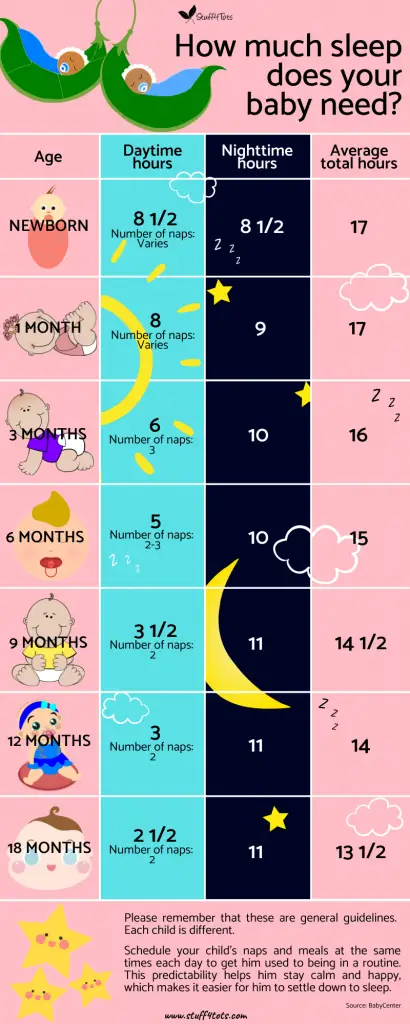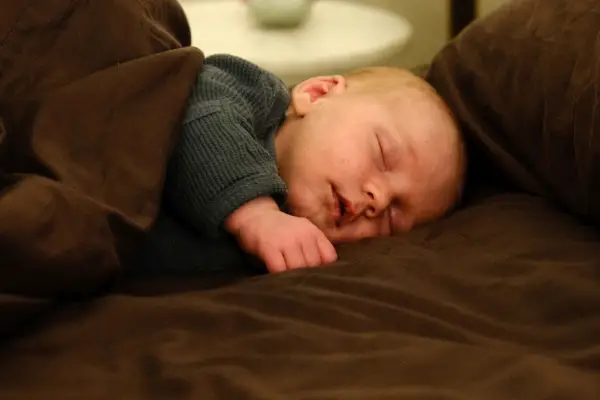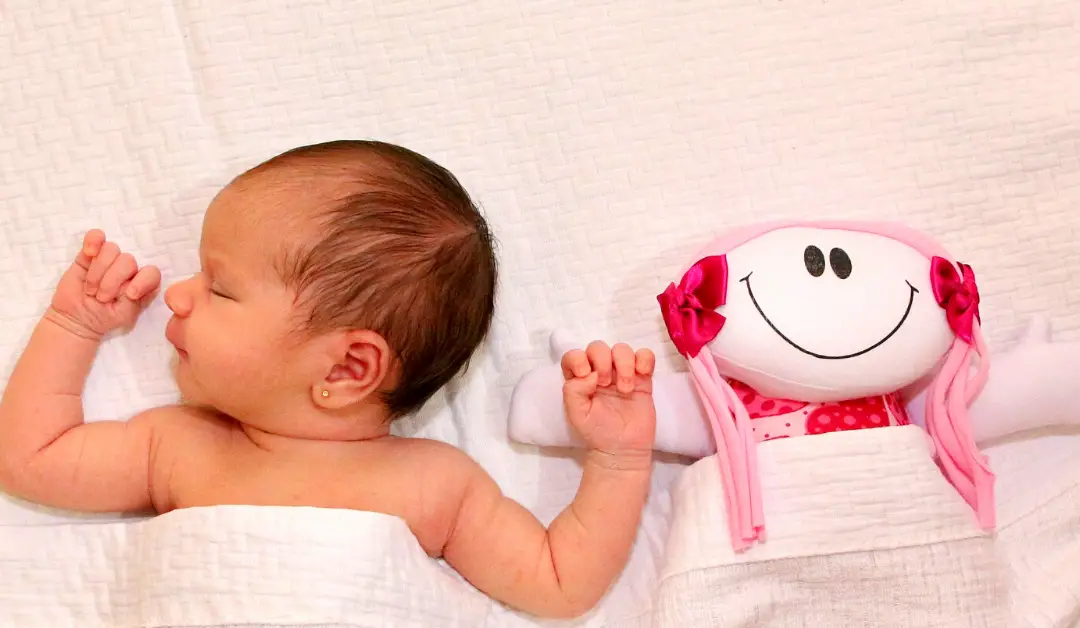Watching your baby sleep gives you a feeling of so much love and warmth. Moms want nothing but the best for their baby. As sleep is a crucial part for the first few months of your baby’s life, it is important to provide them a safe sleeping environment that will accommodate their needs.
If you’re just designing your baby’s nursery, here are some things to keep in mind.
Table of Contents
How Long Should Your Newborn Baby Sleep
Newborns typically sleep for most of the day – about 16 to 17 hours a day usually in 3 to 4-hour periods, and a 3-month-old needs around 15 hours of sleep per day.
They often wake up just to ask to be fed and go back to sleep immediately after. Meaning they have irregular sleeping pattern and a tiring schedule for moms all throughout the day.


Understanding Baby’s Sleep Cycle
Babies have a shorter cycle unlike adults. The cycle is composed of 2 stages: quiet and active sleep. Their sleep cycle usually last for an average of 50-60 minutes for the 1st 9 months and develops more stages similar to adults as they increase in age.
1st Stage: Active sleep
Active sleep is tantamount to the rapid eye movement (REM) sleep for adults and constitutes for 50% of their sleeping cycle. It happens immediately after the baby falls asleep and it is during this time when the baby can easily be aroused.
2nd Stage: Quiet Sleep
Midway through their sleep cycle, they fall into a quiet sleep that can be seen as slower, rhythmic breathing with fewer movements and eyelid movement.
Baby Sleep Mistakes
Keeping your baby awake for too long.
As much as we love it when babies open their eyes and interact with us, it is not okay for them to be awake for far too long as it is in their best interest to sleep most of the time. Babies are usually awake for about 30-40 minutes and go back to sleep right after.
“Fixing” your baby’s sleep.
Who doesn’t love to have a routine day to day and sticking by it? Even if you do write your own schedule for your baby, it is not the time yet to do that as sleeping is the life of your baby for now and they will only open their eyes when they are hungry.
Letting your baby cry it out.
It is not good to let your baby cry for long periods of time believing that it might solve some sleep problems – so for now, avoid doing that.
Not sleeping when your baby sleeps.
You’ve had so many sleepless nights up to now and more to come in the future. Take this opportunity to regain your energy and strength and sleep while your little one is sleeping.
Comparing your baby to others.
Not all babies have the same characteristics and let’s be honest – some are lucky while some are not. Accept the fact that your baby is unique.
Safe Sleep Guidelines for Your Baby
Co-sleeping.
Co-sleeping does not mean that you and your baby will sleep in the same bed. It is having a crib that is close to your bed so that your baby is just nearby, and you can immediately attend to their needs.
Read here to find out When to Transition Your Baby from a Bassinett to a Crib, According to a Registered Nurse.

Right sleeping position.
Have your baby sleep flat on his back on a firm surface like on a crib mattress that is covered with fitted sheets.
Use a Crib/Bassinet that meets the safety standards.
Do not buy cribs that have drop-side rails or are composed of small parts and have missing parts. Make sure that the bed is covered with tight-fitting sheets.
Click here to look into this Graco bassinet with cry detection feature.
If your crib needs an aesthetic upgrade, read here about how to safely paint a crib.
Avoid putting toys, soft objects and small pillows in the crib.
It may be adorable to look at, but this might put your baby in danger and cause suffocation or strangling. We don’t want any harm for your baby.
Avoid letting your baby sleep in strollers, car seat or slings.
Sleeping on these baby carriers might cause suffocation.
Your baby might be too small for a sleeping bag, but when the time comes, check out these 14 best toddler sleeping bags.
Dress your baby in light clothes.
Avoid letting them wear clothes with loose ties and hooded pajamas. If you want to keep your baby warm, let them wear a blanket and tuck them in carefully without covering their face.
Consider getting a sleep sack for your baby to wear while they slumber.
Look into this 2 pack microfleece sleep sack on Amazon. Click here for more details.
Do not rely on baby monitors.
Baby monitors are a great help with monitoring your baby, but nothing beats checking on your little one at night every once in a while.
Try giving a pacifier.
Pacifiers keep their airway open and reduces the risk of suffocation. Just make sure that you don’t hang the pacifier around your baby’s neck or attach it to their clothing.
Avoid baby’s exposure to smoke, alcohol and illicit drugs.
Make sure to keep them away from these harmful chemicals.
Breastfeeding.
Breastfeeding babies lowers the risk of SIDS. It is also promotes bonding between you and your baby and at the same time allows you to rest too.

Establish Good Baby Sleep Habits
Some babies are awake at night and asleep during the day. Help them distinguish the difference between them at 2 weeks old. When they are awake and alert during the day, make sure to play with them and allow light to enter the room. At night, make sure that you lessen the stimuli by dimming the lights and minimizing noise. Also, refrain from playing with them. In time, they will learn that nighttime is for sleeping.
Allow your baby to nap as often as he wants. Don’t wait for your baby to be tired before you let him nap. This might cause him to have trouble sleeping. Watch out for signs that he already needs sleep, like rubbing of eyes and being more fussy than normal.
A Bedtime Routine For Your Baby
You can start setting a bedtime routine around 4 to 6 months. This will allow you to do your daily chores and have some time for yourself. Here’s a sample routine for your baby:
• Play a quiet game
• Give your baby a bath and change him to his pajamas
• Read a bedtime story
• Sing a lullaby
• Softly stroke your baby’s back
• Kiss him goodnight
Do not worry if your baby does not immediately adapt to the new bedtime routine as it could take some time before he follows this routine. Your baby can feel whatever you are feeling so don’t worry too much or get stressed.
Read here to find out the secret tidying trick for a good night’s sleep.
We’ve covered baby’s sleep, but what about mom? Check out 7 Tried and Tested Sleep Saving Tips for New Moms.
Related Articles:

Astley Golosinda
My background is in the field of medicine and I have a Bachelors Degree in Nursing. My thesis in Nursing was also published on Journal of Gerontology
For the past 4 years, I continued my studies and dedicated my time to acquiring a Doctorate of Medicine. I was a working student all throughout my post-doctorate degree. I have clinical experience in the hospital both as a nurse and now as a medical student.





